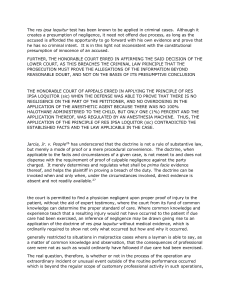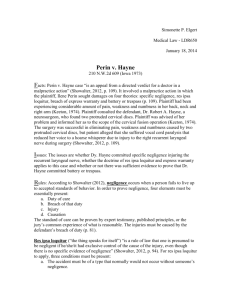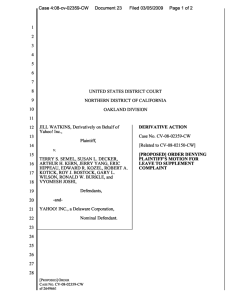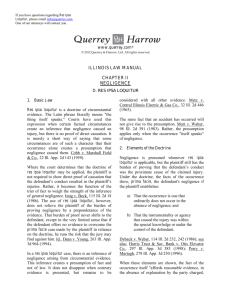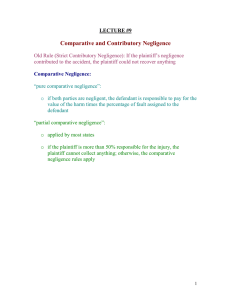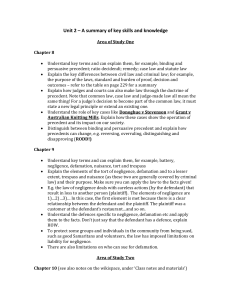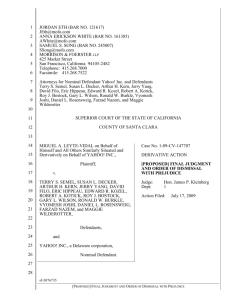醫療過失
advertisement
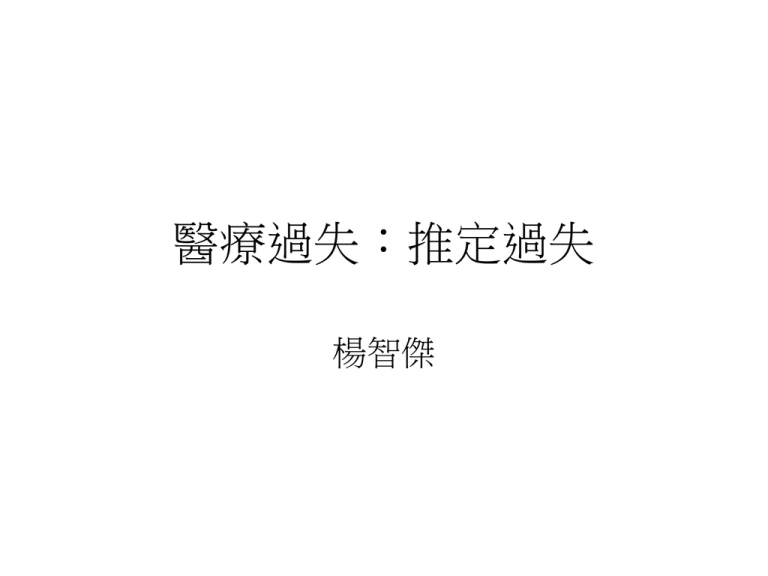
醫療過失:推定過失 楊智傑 證據 • 直接證據(direct evidence) • 環境證據(circumstantial evidence) • Res ipsa loquiter – 讓事實本身證明 – (the thing speaks for itself) 事實本身證明:推定過失 • In limited instances, res ipsa loquitur(讓 事實本身證明)may be applied against multiple(複數) defendants. The best know example is Ybarra v. Spangard, 154 P.2d 687 (Cal. 1994) (SATL4th ed., p. 344), a case in which, during an appendectomy(盲腸切除手術), the plaintiff suffered an injury to his shoulder. 手術有很多人參與 • A negligence suit was brought against several defendants, including the surgeon (外科醫師), the attending physician(主 治醫師), the anesthesiologist(麻醉師), the owner of the hospital, and two nurses. • There was no dispute that the injury normally would not have occurred in the absence of negligence and that the plaintiff was not a responsible cause. 誰才有過失? • The controversy centered on whether the plaintiff had to show, as in the usual case, that the negligence was attributable to a particular defendant. • The court recognized that it would be manifestly unreasonable to require a person who was unconscious(失去意識) at the time of injury to identify the wrongdoer. 一般過失或嚴格責任? • It further acknowledged that unless the plaintiff could rely on res ipsa loquitur to establish negligence, the court would be faced with the unattractive choice of – allowing the defendants to escape liability, and thereby perhaps encouraging careless practices, – or adopting a rule of strict liability, and thus discouraging persons from rendering(提供) services in the health care field. 中間責任:推定過失 • Faced with these undesirable alternatives, and emphasizing the fact that each defendant was bound to exercise caution to see that no unnecessary harm came to the plaintiff when he was in their care, the court decided on a middle course. 推定過失,但可舉反證推翻 • It determined that the plaintiff could rely on the doctrine to raise a presumption of negligence (推定過失) as to each defendant, but that any defendant could meet(對付) that presumption by giving a satisfactory explanation of his or her conduct. • At the retrial of the case, some defendants testified that nothing happened which could have caused the injury. The jury rejected that testimony and found all defendants liable.
